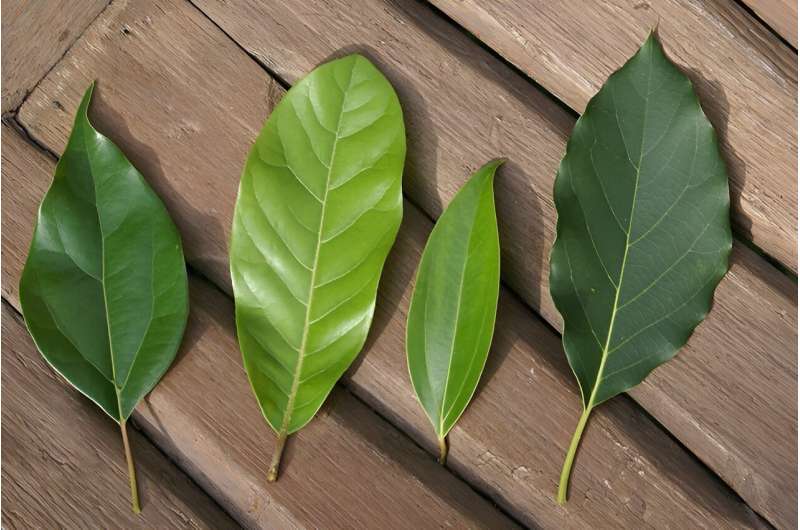This article has been reviewed according to Science X's editorial process and policies. Editors have highlighted the following attributes while ensuring the content's credibility:
fact-checked
trusted source
proofread
Researchers reinvestigate phylogenetic and biogeographic history of trees in Cryptocaryeae
The family Lauraceae is a prominent component of the evergreen broadleaf forests in the tropics and subtropics. However, the biogeographical history of the family is poorly understood due to the difficulty of assigning macrofossils to living genera, poor pollen preservation, and the lack of sufficiently resolved or well-supported phylogenies.
In a study published in Taxon, researchers from the Xishuangbanna Tropical Botanical Garden (XTBG) of the Chinese Academy of Sciences and Guangxi Normal University used plastid genome sequencing to reinvestigate the phylogenetic and biogeographic history of trees in the tribe Cryptocaryeae, with about 800 species that rely on vertebrate frugivores to disperse their seeds.
The researchers compiled a dataset consisting of 45 newly generated plastomes, 34 published plastomes, and 97 trnK and related barcode sequences representing 176 species spanning all clades identified in the Cryptocaryeae.
Their topology provided strong support for sisterhood between the Beilschmiedia clade and the Cryptocarya clade, with Aspidostemon and Dahlgrenodendron as the next sister group, followed by Eusideroxylon. Both the Beilschmiedia and Cryptocarya clades are 100% supported monophyletic in the analysis.
According to their molecular clock approaches and biogeographical inferences, the time of divergence of the crown lineages within the Cryptocaryeae was estimated to be about 102 Ma (124–79 Ma) in the Cretaceous, and Asia or Africa could be the ancestral area for the Cryptocaryeae.
Subsequently, an acceleration in both lineage accumulation and colonization within the Cryptocaryeae was estimated at around 73 Ma (107–59 Ma) in Africa or South America.
Their phylogeny suggests that the Cryptocaryeae originated in and diversified with the first angiosperm-dominated evergreen broadleaf forests, from the Cretaceous in Africa or Asia to their maximum global extent in the Paleogene.
In addition, there was long-distance seed dispersal, probably by birds but possibly also by flotation, which may have allowed Cryptocaryeae to spread, despite a failure to adapt to cold, arid, or highly seasonal environments.
More information: Yu Song et al, Phylogeny and biogeography of the Cryptocaryeae (Lauraceae), Taxon (2023). DOI: 10.1002/tax.13084
Provided by Chinese Academy of Sciences


















